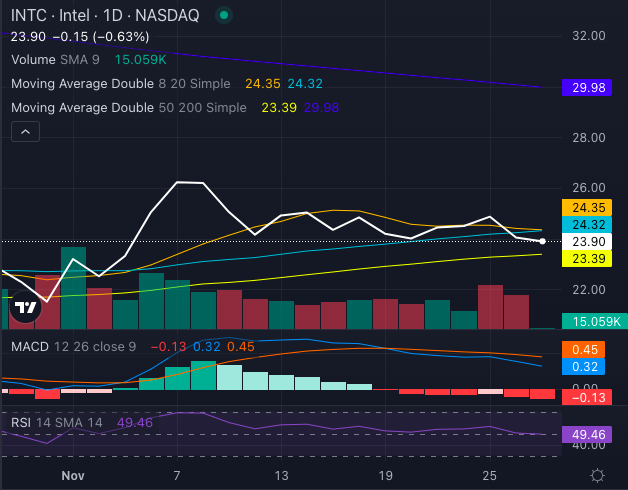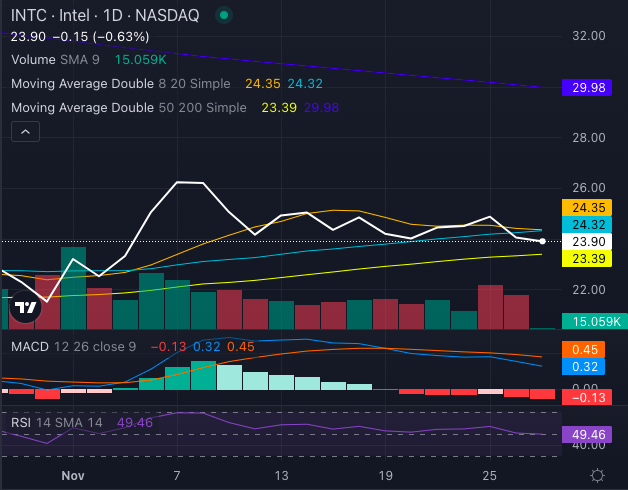Intel Secures $7.86 Billion Grant: A Critical Moment in Chip Manufacturing INTC has been awarded a $7.86 billion grant through the CHIPS Act, a key initiative aimed at strengthening U.S. semiconductor production as part of the Biden administration’s efforts.
While this funding aims to accelerate Intel’s expansion of manufacturing facilities, the company continues to face significant hurdles on its path to regain market prominence.
Intel’s Funded Future
The CHIPS Act grant, now slightly below the originally promised $8.5 billion, is crucial for Intel’s plan to grow its manufacturing operations in the United States. CEO Pat Gelsinger described the grant as a defining moment for the U.S. semiconductor industry, reiterating Intel’s dedication to enhancing production capabilities.
Nonetheless, the reduced grant amount indicates a growing doubt about Intel’s operational effectiveness during what has been a challenging year.
Related: Taiwan Semi’s Growth Helps U.S. Rise to Second in Chipmaking: Report
Challenges Ahead for Intel
Despite this injection of funds, Intel is facing considerable financial distress and strategic dilemmas. In the last quarter, the company reported a staggering $17 billion loss and has since reduced its workforce by 15,000 employees as part of its restructuring effort. Recent actions, including the consideration of divesting a minority stake in its Altera division, highlight the urgent need for Intel to stabilize its financial footing.
Furthermore, talks of a potential acquisition by Qualcomm Inc QCOM have surfaced, adding to Intel’s challenges in the competitive chip market.
Stock Performance and Future Outlook
Intel’s stock value has not been reassuring, with shares plummeting 45% in the past year.

Chart created using Benzinga Pro
Current market indicators reflect uncertainty:
- Weak Signals: The stock is trading at $23.90, below its eight-day moving average ($24.35) and 20-day moving average ($24.32), which are bearish indicators.
- Small Optimism: The 50-day moving average stands at $23.39, coupled with a moving average convergence/divergence (MACD) of 0.32, hinting at the potential for short-term improvements.
- Long-Term Recovery Needed: The 200-day moving average is at $29.98, indicating a significant challenge ahead to regain investor confidence.
While the grant from the CHIPS Act presents a vital opportunity for Intel, the company’s success will depend on its ability to effectively execute its manufacturing initiatives and adapt to the shifting market landscape. Investors are likely to remain cautious as they await signs of recovery from Intel.
What to Watch Next:
Photo: Tada Images/Shutterstock.com
Market News and Data brought to you by Benzinga APIs

